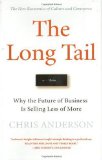Using Social Media: Part 3 – Social Networking Sites
Update: I’ve edited this post to provide a more objective view of social media and how it can be applied.
This is the third post in a 6 part series on how to use social media. In this third installment, I highlight how yoru can participate in social networking sites.
Social Networking Sites
Marketers are seeking to break into several social networking sites, such as Facebook, LinkedIn and MySpace. From my perspective, there seems to be two popular models right now – create a group or fan page or participate in existing communities (what Jeremiah Owyang calls “fishing where the fish are“). The former requires dedication to manage the community and ensure that there is fresh content. The latter requires participation in a group without the onus of owning that community.
And while I believe social media should be an integral part of B2B marketing, the reality is that this takes a concerted effort and time. As such, I recommend aligning your efforts with the latter strategy until more staff or focus can be given to the former. While there are different communities to join, LinkedIn has some benefits that you should consider.
Why? I hate to say this, but frankly, of all the social networking sites, organizations can be overtly salesy on LinkedIn. I know, I know – that isn’t the point. So let me be clear, I DON’T RECOMMEND THAT YOU SELL FROM THE PLATFORM. Rather, apply the same rules you would apply elsewhere – be transparent of who you are and offer valuable information. So even when others are being blatantly self-promotional, you and your company are seen as contributory. You’ll see what I mean below.
LinkedIn Specifics
With that said, here are the aspects of LinkedIn that I recommend:
-
LinkedIn Answers: Monitor questions for topics that are you related to your company. When appropriate, respond to relevant questions to position you and your company as an industry expert. There will be instances when you can recommend your company as a prospective vendor. Again, you have to be careful that you’re not too self-promotional as your answer can be flagged as inappropriate. Overall, LinkedIn Answers is a good way to provide brand awareness for your company. And since LinkedIn Answers are searchable, your responses may appear in Google search results.
-
Groups: There are numerous groups within LinkedIn. It’s important to research specific groups as some may be more self-promotional than others. I recommend seeking groups with audiences that are relevant to your company and have good participation by its members. Once you join a group, monitor the discussions before fully participating.
-
Group Questions: Like LinkedIn Answers, each group incorporates this same functionality. By responding or asking questions in a group, you position your company as an industry expert to a targeted audience relevant to your business.
-
News: You can submit article links, like Facebook Share, that are relevant to the groups. In addition to blog posts, you can submit general news articles that mention your company or are relevant to your industry. You can also consider submitting submit press releases. While this is slightly self-promotional, make sure the article or press release discusses a larger trend of interest to the group.
-
-
Events: LinkedIn recently introduced a way for members to post events. If you have a webinar, in-person seminar or other gathering that you want to promote, LinkedIn events is a place to promote it. What I liked is that they have an option for “virtual events” as well. You can then share this event with your contacts as well as be searchable by other LinkedIn members. One drawback, in case you have to cancel the event, there doesn’t seem to be a way to delete the event.
Conclusion
Overall, LinkedIn is a great way to position your company or company spokesperson as an industry expert, while increasing brand awareness with key audiences. Your participation can also have competitive advantages as well when potential sales leads are researching and evaluating vendors.
And if you or a colleague is dedicated to moderating an online community, consider setting up your own group. HubSpot has done an excellent job at setting up their own group, moderating the group and finding synergy with their Facebook presence as well.
Other posts in the series:
Using Social Media: Part 1 – Microblogging
Using Social Media: Part 2 – Search Feeds
Using Social Media: Part 1 – Microblogging
 Update: I’ve edited this post to provide a more objective view of social media and how it can be applied.
Update: I’ve edited this post to provide a more objective view of social media and how it can be applied.
There has been a lot written about how to use social media and what the ROI is from using the various tool. Instead of trying to reach all audiences, I view social media as another communications avenue to expand the reach of your company’s specific audiences and customers.
If I was in an agency, I would list my key objectives and list the tools that would help accomplish these objectives. Since I’m not, I did what was easiest – listing the different tools I use and bullet pointing how each helps me. See how lazy I got going in-house…=)
I originally was going to have one post but I realized this would be too long. As such, I will have a multi-part series focusing on one segment of separate tools. In this first installment, a look at microblogging.
Twittering a Twhirl
I use Twitter as my main microblogging platform, with Twhirl to manage personal and corporate accounts. Check out my previous post on Twhirl for more information.
- Brand awareness: Twitter is gaining traction as viable avenue for brand awareness. I anticipate seeing more company brands using Twitter as a viable communications vehicle. Similar to a website, they will need to have a Twitter handle; otherwise, we’ll start seeing “Twittersquatting” happening.
- Customer Engagement: Twitter is another way for your company to connect and engage with customers by following the customer’s brand, a specific department or individual for updates. This is especially true if your customers tend to be early adopters of technology. I recommend responding to appropriate tweets, especially when your company is mentioned or if people are discussing a related topic.
- Industry Conversations: I recommend following key individuals, such as reporters, analysts and industry luminaries, who are relevant to your company. In this way, you can keep a pulse of topics important to them and provide insight from your company’s perspective.
- Competitive Intelligence: Consider following individuals from competitive companies. This is one way for monitoring what competitors are doing and who they may be speaking with.
- Corporate Marketing: And I purposely put this last. The first tendency is to only tweet updates about what your company is doing – new webinars, white papers, etc. While this is important, you need to balance this with tweets about industry topics that would be of interest to your followers or links to interesting articles. Remember, participate in conversations. It’s not a one-way marketing channel.
Conclusion
While microblogging is still “new” to many marketers and public relationships professionals, it is quickly becoming a de facto need like a website. Since microblogs are bite-sized updates, a more intimate environment is created between the Twitterer and her followers.
A company that engages its audiences with microblogging can further increase its brand awareness, while creating a stronger community.
Retweet this Link
To make is easy for you to tweet this on Twitter, copy and paste this snippet:
RT – Using social media. Part – microblogging: http://twurl.nl/rorux8.
technorati tags: Marketing Social Media Twitter Twhirl Online Reputation Management Brand Customer Competitive Intelligence PR Public Relations
del.icio.us tags: Marketing Social Media Twitter Twhirl Online Reputation Management Brand Customer Competitive Intelligence PR Public Relations
icerocket tags: Marketing Social Media Twitter Twhirl Online Reputation Management Brand Customer Competitive Intelligence PR Public Relations
All content copyright Cece Salomon-Lee, Creative Commons Attribution-Noncommercial-Share Alike 3.0 Unported, with the attribution: By Cece Salomon-Lee, PR Meets Marketing, and a link to the post.
Recap: "Will Social Media Kill PR" Panel
Susan Etlinger, Jeremiah Owyang, Kara Swisher, Sam Whitmore
Last night, I went to a panel discussion hosted by the Horn Group and Girls In Tech. There was a star line-up of panelists: Jeremiah Owyang of Forrester Research and Web Strategist Blog, Kara Swisher of WSJ and All Things D, Susan Etlinger, VP of Horn Group and Sam Whitmore of Media Survey as moderator.
The topic provided attractive with over 200 people packed in the Horn Group offices on Howard St. Considering the economic news swirling around me, the event reminded me a bit of the heady dot.com days – yes, I really am that old Virginia! Twitter tag #prblog.
Sam took a quick poll of the audience before commencing with the Q&A. It seemed the audience was 60% PR folks, 20-25% Horn Group clients and other people interested in the topic from marketing/social media backgrounds.
PR is not dead. It’s being reborn” – Sabrina Horn
To summarize some key quotes from the evening (may not be verbatim quotes but gives you a gist of the meaning):
Jeremiah:
“Join community to reach audience regardless of your client. Has the relationship with person I want. It’s the influencer model”
“Opportunity for PR is to listen. People will tell you what they’re interested in”
“Extend the value of PR – currently don’t have the key skills to do that”
“Big opportunity to use these tools to grow beyond corporate communications”
“Use the tools to repair the PR reputation”
Kara Swisher – I’ve read her blog and hearing her in person was definitely more amusing!
“PR people are so easy to get upset. Stop being reactive to the bloggers who are doing this to be trafic whores”
“War with PR is not important. There are more important things to fight over like Proposition 8”
“Focus on people with amazing relationship with people”
“Give me news and trends that your company represents. Trends with interesting products. Needs real news. Interesting figures and thought leaders. Cool interesting products that people are using. Weird stories will also get me too.”
“Nothing new – it’s about how good is the product. Don’t PR crap products”
Susan
“PR is about creating replicable processes, but replicable process can get you in trouble.”
Audience Comments
“Relationship economy. Release is so narrow”
“[PR’s] obligation is to not put out shit out there. If it has value, then yes. Otherwise, no.” Charlie Cooper, CNET
“How to leverage important bloggers to help with news” – Razorfish
“How does PR practitioner leverage these tools to help business”
“Performance based payment and measurement like a media buy – will an agency risk this?”
Deja Vu – Didn’t we see this 10 years ago?
For a panel discussion that promised to be titillating, I found that it was bogged down by semantics of PR’s role in the social media landscape versus how the industry, as a whole, can better address this as a core competency. These were the same discussions that occurred 10 years ago with the rise of the Internet, which ironically was referenced when Sabrina pulled out a big, black binder about the impact of the Internet on PR.
To paraphrase one audience member, what we’re referring to – Twitter, blogs, wikis, etc. – are just communications tools. In 5-10 years, these may be commonplace ways to communicate with your audience. While the panel was informational for those new to PR or currently struggling with PR’s value within the larger marketing and social media landscape, I think the panel didn’t truly delve into the question of the evening – Will Social Media Kill PR.
My Perspective?
I was sitting in the balcony where most of the social media folks were sitting. When Sam turned to us and asked if our issues were being addressed, frankly they weren’t and I said so (yes, that was me voicing the need to get beyond PR and talk about how this fits into the larger marketing arena). Unfortunately the discussion turned back to the basics of PR 101 meeting social media.
In the end, I agree with Jeremiah. PR has a window of opportunity to leverage social media to build higher business value with customers and companies beyond a corporate communications capability. When the discussion evolves from which outlet can you get me in to one of what audiences do you want to influence, then PR will have a seat at the table.
But hasn’t this always been the crux of the problem for PR from the beginning? Does social media really change that conversation? I don’t think so. What do you think?
Update:
– Jeremiah’s post about four biz opportunities for PR agencies
– Kara Swisher’s post about the panel
– Sam Whitmore’s summary
– Charles Cooper’s take – PR is Killing PR, not Social Media.
– While Lewis Green wasn’t at the panel, he brings up a good point about the value of social media in PR.
– Horn Group’s summary about their Is Social Media Killing PR panel.
– Jennifer Leggio’s post at ZDNet. I think she summarized it perfectly: ” too much focus on dialing for dollars and not enough focus on making PR stretch to support real business initiatives.”
A Hidden Rule of PR – If you don’t ask, how do you know you won’t get it?
 Since my first PR job with Ogilvy & Mather PR Taiwan, I’ve discovered this “hidden rule” the hard way. When you’re just starting out, you’re taught to do what you can to please the journalist – and now extending to bloggers. Most practitioners start by asking what the journalist wants but now asking questions that you want to ask on behalf of your client or company.
Since my first PR job with Ogilvy & Mather PR Taiwan, I’ve discovered this “hidden rule” the hard way. When you’re just starting out, you’re taught to do what you can to please the journalist – and now extending to bloggers. Most practitioners start by asking what the journalist wants but now asking questions that you want to ask on behalf of your client or company.
I understand not wanting to anger a reporter, but if you don’t ask the question, then how do you know? We assume that we’ll be bothering the reporter/blogger but you never know what the answer will be if you don’t ask.
So here are some questions that you should ask:
What’s the timing for the story?
People err on thinking that because you’ve just hung up the phone with a journalist that you have to immediately work on what the reporter is seeking. Agency folks – for your client’s sanity, determine what the time line is. This way, if the reporter needs it in a week, you can build cushion with your client. I used to say I needed something in 3 days because I KNEW it would take my client 5 days to turnaround.
This also sets expectations with the reporter. Otherwise, the reporter may want it tomorrow and you’ll never know.
What is the angle for the story?
I know, I know. This should be apparent from the conversation, editorial opportunity or email pitch. But you should reconfirm as the reporter may have a specific angle that she’s seeking to write about. It’s your job to pull this out if possible.
Do you have specific questions in mind that you would like to ask?
Most briefing sheets include a section where we, as practitioners write questions that we believe that the reporter will ask based on the conversation or previous articles. Why not just ask and see if the reporter is willing to give you a few questions. Better yet…
Provide some sample questions
I file this as being a “helpful” PR person. I include a couple of questions to better identify the focus of the interview. However, you have to be careful about this. While the previous question asks the reporter for her questions, this one inserts your positioning into the process.
I will pose some questions if you’re doing an email Q&A or if there is limited time for the phone interview. This way, the questions help to maximize everyone’s time.
Offer to provide screenshots
As they say, a photo says a 1000 words. Screenshots help to visually augment the story, while reinforcing your company’s visual brand. Regardless of the story, I always ask about providing screenshots. More often than not, the publication will use the screenshot. And if several competitors are interviewed, this helps to visually position your company as the “thought leader” in that space.
Conclusion: Being Polite Won’t Get You Anywhere
Let’s be clear, I’m not advocating rude or clueless practitioners. I’m just recommending that you don’t be afraid to ask questions. Each situation will dictate the type of questions you can and should ask.
What other questions did I miss?
My Top 5 Blogging Outreach Mistakes
The posts that I learn the most from are by those who are willing to show their mistakes and what they’ve learned. This not only humanizes them but also makes us feel just a little bit less stupid!
While there are a lot of posts about how to pitch a blogger, I thought it would be an interesting twist to list the top five mistakes I’ve made a la Letterman style:
My Top 5 Pitching Blogger Mistakes
Number 5: Oops – I thought that was MISS Blogger, not MISTER Blogger
Number 4: Spellcheck is a wonderful technology…when you USE it
Number 3: I’m not stalking you honestly. Could you just puhleeze respond to me?
Number 2: Sorry – didn’t realize you just wrote about this… yesterday!
And the number 1 mistake that I’ve made pitching a blogger:
Who cares about YOUR interests, it’s all about ME
What mistakes have you made? Bonus points for your Letterman style list!
But if you’re interested in more information about how to pitch, check out my page about pitching bloggers and 8 Practical Tips for PR and Blogging Outreach.
technorati tags: blogging social media pr marketing public relations pitching bloggers media relations
del.icio.us tags: blogging social media pr marketing public relations pitching bloggers media relations
icerocket tags: blogging social media pr marketing public relations pitching bloggers media relations
All content copyright Cece Salomon-Lee, Creative Commons Attribution-Noncommercial-Share Alike 3.0 Unported, with the attribution: By Cece Salomon-Lee, PR Meets Marketing, and a link to the post.
Recent Guest Posts on Virtual Events
I was honored to guest post on a few blogs regarding virtual events and trade shows. If you’re interested in learning more about virtual events, check out these posts:
-
Bonjour Events:Planning a Successful “Virtual” Event
-
Julius Solaris’ Event Manager Blog: Virtual Trade Shows are Around the Corner
-
Lewis Green’s BizSolutions Plus blog: What is a Virtual Event?
-
Also check out my previous post “Are Your Ready for Virtual Trade Shows?”
technorati tags: Virtual Trade Show Virtual Event Public Relations Marketing
del.icio.us tags: Virtual Trade Show Virtual Event Public Relations Marketing
icerocket tags: Virtual Trade Show Virtual Event Public Relations Marketing
All content copyright Cece Salomon-Lee, Creative Commons Attribution-Noncommercial-Share Alike 3.0 Unported, with the attribution: By Cece Salomon-Lee, PR Meets Marketing, and a link to the post.
Sarah Palin and Media Training 201!
Disclosure, while I lean toward Democrats/Independent, this post purely provides insight on Palin’s performance, not the content.
Last week, I wrote about the one-on-one interviews Sarah Palin had conducted. I highlighted her weaknesses and provided some media recommendations before the vice presidential debate. Her interviews singlehandedly increased the attention that the VP debate would receive.
How Did She Do?
While I watched the debate to educate myself about the candidates, I kept in mind the weaknesses I highlighted previously. To summarize:
– She responded with canned messages to EVERY question
– She allowed herself to be cornered on questions which led to
– Her answering questions she shouldn’t had
– She was visibly uncomfortable with the speed and style of questions
Based on this, here is where she improved:
Visible Presence: I think this format played to Palin’s strengths. She demonstrated confidence and charisma that electrified Republicans, and took Democrats off guard, at the RNC. Palin seemed more comfortable as she could focus on the audience, not just an interviewer.
Bridging Responses: The other benefit was the debate format. It seemed that each veep candidate had notes behind his/her podium, which can be reassuring to a person. Furthermore, the 5 minute limit on each question prevented the moderator from digging into each person’s response.
While Palin was considerably better with her responses, I think she can improve on how to bridge her responses. In fact, she overtly stated that she would not answer questions that she felt the media wanted, but rather the viewer. Not great, but from a communications perspective, she did what we always counsel – respond to the question that you want asked, not the one that was asked.
Preparation: I give Palin 4 gold stars. She was clearly MORE prepared than her interviews. She had 3-4 key points that she highlighted throughout the debate. I only detected 2-3 questions when she seemed to struggle, but she recovered quickly.
Conclusions
With political pundits and prospective voters watching her closely, Palin did a great job to nullify the concerns that her interviews had raised. I recognize that the expectations may not have been high to begin with but you can’t deny that she provided a great performance.
She does have room for improvement regarding how to bridge her response with the question asked. Future interviews won’t be like the debate. But in just one and half hours, she definitely responded to her skeptics.
Do you think this debate is enough? Or are the doubts still around?
technorati tags: Sarah Palin PR Public Relations Media Relations Media Training
del.icio.us tags: Sarah Palin PR Public Relations Media Relations Media Training
icerocket tags: Sarah Palin PR Public Relations Media Relations Media Training
All content copyright Cece Salomon-Lee, Creative Commons Attribution-Noncommercial-Share Alike 3.0 Unported, with the attribution: By Cece Salomon-Lee, PR Meets Marketing, and a link to the post.
About
Favorite Service
Recent Comments
- on Going Virtual Isn’t Necessarily the Answer to Replacing Your Physical Events
- on Going Virtual Isn’t Necessarily the Answer to Replacing Your Physical Events
- on Going Virtual Isn’t Necessarily the Answer to Replacing Your Physical Events
- on Going Virtual Isn’t Necessarily the Answer to Replacing Your Physical Events
- on Going Virtual Isn’t Necessarily the Answer to Replacing Your Physical Events
Ads by Google
Favorite Books
Marketing Blogs
PR Blogs
- KD Paine's Measurement Blog
- Micro Persuasion
Virtual Events & Meetings Blogs
- Cisco Virtual Environments
- It's All Virtual
- The Webinar Blog
- Virtual Edge Institute

 Follow
Follow Cece Salomon-Lee is director of product marketing for Lanyon Solutions, Inc. and author of PR Meets Marketing, which explores the intersection of public relations, marketing, and social media.
Cece Salomon-Lee is director of product marketing for Lanyon Solutions, Inc. and author of PR Meets Marketing, which explores the intersection of public relations, marketing, and social media. 


